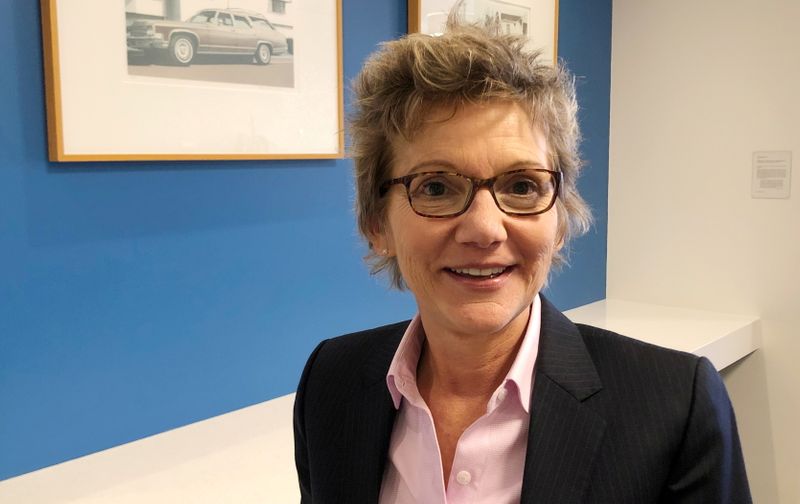By Ann Saphir
(Reuters) -The U.S. central bank may be in a position to start reducing its extraordinary support of the U.S. economy by late this year or early next year, according to San Francisco Federal Reserve President Mary Daly.
“I am bullish on the recovery,” Daly told reporters on Tuesday after a talk on climate change risks at the Peterson Institute.
“Substantial further progress” towards full employment and the Fed’s 2% inflation goal – the threshold the Fed set last December for reducing its $120 billion in monthly asset purchases – is “within our line of sight – I think it’s possible we could even get there some time late this year, early next year.”
“We are not there yet, but it is appropriate to start preparing for the time we would hit that threshold,” she said, echoing the remarks of Fed Chair Jerome Powell who last week said policymakers would next month start debating the timing and pace of a reduction in asset purchases. Daly said that among topics of discussion will be whether the Fed should reduce its purchases of mortgage-backed securities sooner or faster than Treasuries, given the heated housing market.
Though she said that it will be up to the committee to make any decision, she appeared to tip her hand in the debate, saying that the mortgage markets are working well and that the Fed’s MBS buys are not directly affecting mortgage rates but rather, along with purchases of Treasuries, financial conditions as a whole.
Daly’s views are typically right in line with those of Powell and the rest of the central bank’s leadership, and reflect a growing sense that, with the pandemic receding at least domestically, the economy is nearing a time when it won’t need the Fed’s full-throttle support.
But, she said, that doesn’t mean the Fed is backing away from its new framework under which it has pledged that, unlike before the pandemic, it will not tighten policy in the face of a strengthening labor market unless inflation really starts to run hot, which she does not anticipate.
Though she expects inflation to potentially breach 3% as demand recovers and supply constraints push up prices, the Fed should remain “steady” on policy and not respond to the next few months of “volatile” data, she said.
“I am really looking to the fall to get some more clarity about the future path of the economy,” she said, noting that by then many of the factors limiting labor supply – school closures, virus worries, unemployment insurance – will have eased.
(Reporting by Ann Saphir; Editing by Andrea Ricci)
















